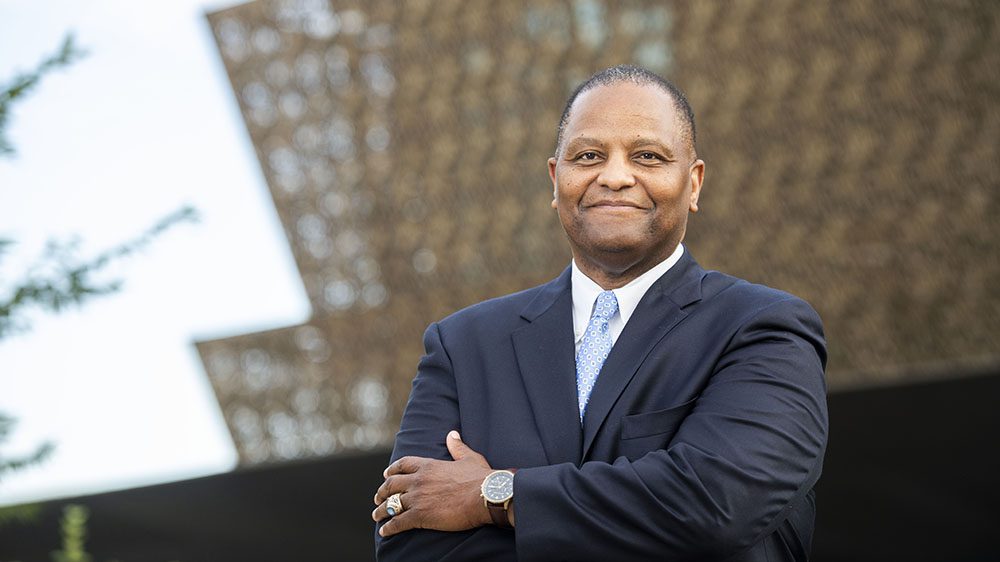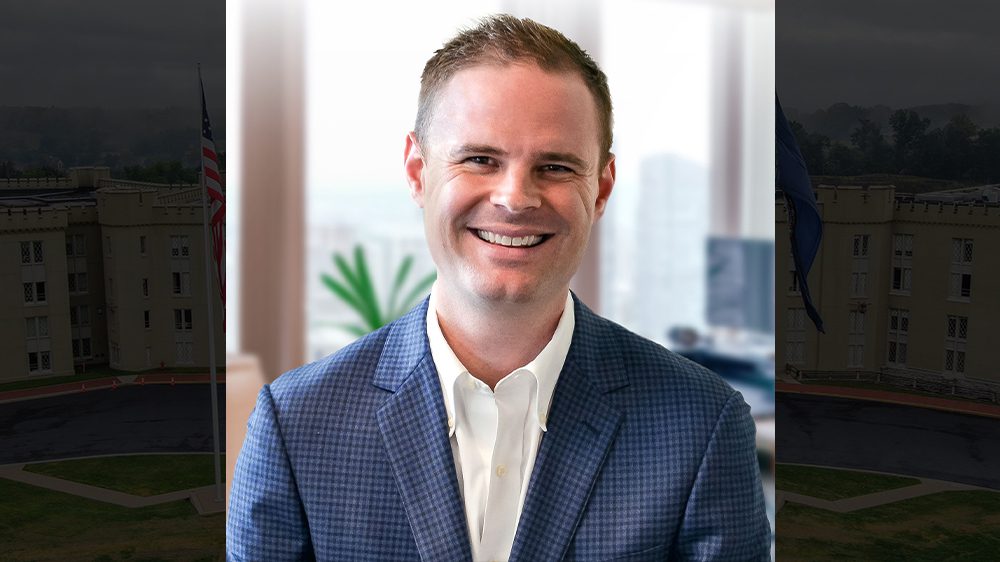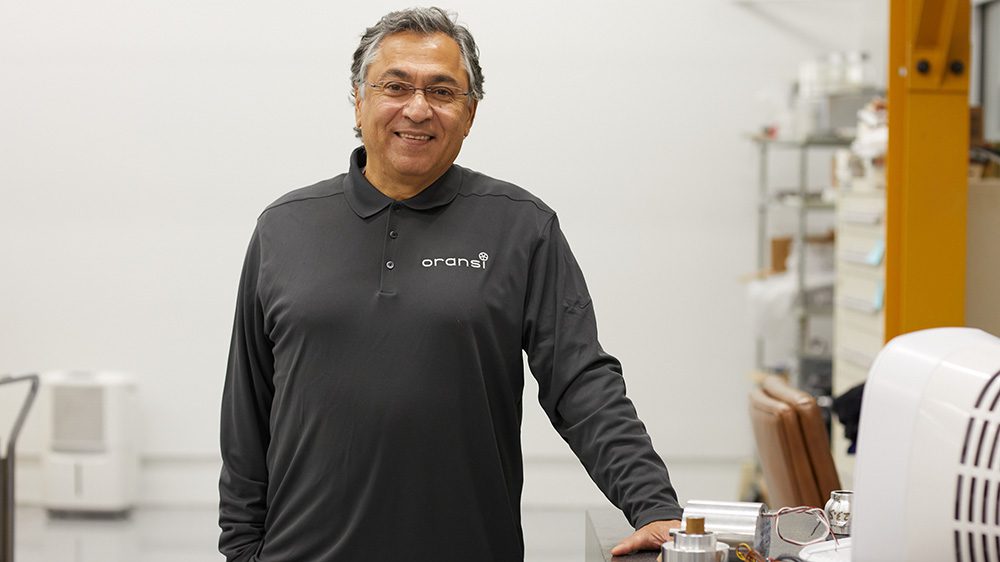Though Bellamy didn’t know it at the time, his time at the Institute and graduation would lay the foundation for a successful career. “They were very formative years in my life, learning how to stay focused and persevere through those very difficult four years,” reflected Bellamy. “I knew I wanted to finish. I didn’t want to quit. I wanted to graduate in four years with a civil engineering degree.”
After graduation, Bellamy began working for the U.S. Army Corps of Engineers before moving on to the Naval Facilities Engineering Command. While working for the Navy, Bellamy was mentored by Gary Mackey ’69, his supervisor at the time. The two maintain a close relationship, and Bellamy often thanks Mackey for investing in him. “[Mackey] played a big role in mentoring me as a young engineer. He encouraged me to pursue challenging international job assignments, professional registration, and made sure I was prepared to compete and be selected for high-impact jobs that were visible and career-enhancing.”
Some time later, Bellamy and his wife, Kimberly, were living in Iceland. During that time, he visited Italy in a consulting role and fell in love with the country, but he had no luck when he looked for a job there.
Then, he received a call one day from Mackey, who said, “They’re starting to forget about you. You need to come back so you’re more visible.” And so, in 1997, they returned to the U.S. Three years later, after prompting from Kimberly, who knew Bellamy continued to dream of working and living in Italy, Bellamy reached out to Mackey. “I went to see Gary [Mackey] that next day, and he said, ‘You won’t believe it, but the guy that’s leading the construction program in Northern Italy is coming back, and the job is yours.’” This was the largest construction program in the history of the North Atlantic Treaty Organization, and Bellamy enjoyed his time there as the work was challenging and career-broadening.
While Bellamy was happily employed in Italy, the Smithsonian recruited him to oversee the planning, design, and construction of the National Museum of African American History and Culture. He, however, wanted to remain in Italy for another seven years and turned the offer down. A short time later, the Naval Facilities Engineering Command’s leadership told Bellamy he had been overseas too long and needed to return to the U.S. to work on other high-priority programs. This time when the Smithsonian reached back out to Bellamy again, the offer was more compelling.
“The Smithsonian came again and said, ‘You might be interested in this. Not only will you be responsible for the National Museum of African American History and Culture, but all the planning, design, and construction for all the Smithsonian facilities across the country and down into the Republic of Panama,’” recalled Bellamy.
Bellamy took the offer. This job, which was two levels above his position at the time, allowed him to expand his skill set professionally. “I was fortunate to get that job. It really stretched me as a leader,” he said. “I got promoted from a midlevel leader to a senior executive leader, so it required a different set of skills. You’re not leading small teams; you’re leading a large and complex organization.” In this position, he led an 18-month strategic planning effort for this 1,800-person facilities organization, delivered $2 billion worth of capital improvements that included overseeing several major capital projects like the National Museum of African American History and Culture, and co-led the implementation of major organizational realignment and change management initiatives.
Work on the National Museum of African American History and Culture took 10 years to complete. One of the amazing aspects for Bellamy was collecting all the exhibits that would be displayed at the museum, as well as the intention behind the museum design, including the choice to place the museum deeper into the ground. “The idea behind this design decision was to give you this sense of freedom and life as you leave the deep darkness and sadness experienced at the slavery exhibit in the lowest level of the museum and travel up to exhibits in the upper levels,” said Bellamy.
Reflecting on why he finally took the Smithsonian opportunity, Bellamy recalled a poignant conversation with his pastor’s wife. He was making a comment about turning down the offer while attending church Sunday when his pastor’s wife pulled him aside. “She said, ‘Wait a minute, you turned down an opportunity to be involved in a museum that represents the entire African American race?’ I knew I was in trouble then,” Bellamy quipped. “She said, ‘This isn’t about you. It’s about your children and your grandchildren. You never know, this museum might be an answer to some slave’s prayer to remember what happened to them.’ When she said that, it had a big impact.”
After five years with the Smithsonian, Bellamy retired from public service and transitioned to Clark Nexsen Architecture and Engineering before moving to his most recent role before Yale—executive director of facilities services at Kaiser Permanente Health Plan Foundation of the Mid-Atlantic States Region. As part of that job, Bellamy oversaw a $130 million annual operating budget and a $3.5 billion multiyear capital program.
A former colleague who hired him at Kaiser reached out to Bellamy about the position at Yale, as he felt it fit Bellamy perfectly. “Yale has museums, labs, administrative buildings, academic buildings, residence halls, health care facilities, and I have experience with all those building types,” said Bellamy. “I honestly feel all my experience over my career prepared me for this. And what a way to end your career at such a prestigious institution of higher education that has so much influence around the world. The Yale facilities and capital development team is responsible for a $3.7 billion five-year capital program, an annual operating budget of more than $270 million, a diverse workforce of nearly 1,000 staff members, and the maintenance and operations of 20 million gross square feet of build space comprised of almost 350 historic and new buildings across three campuses and throughout New Haven and the state of Connecticut. It’s extremely exciting to be a part of this endeavor. I’m very grateful for the opportunity to lead at Yale.”
It comes down to one of the major takeaways Bellamy has carried with him throughout his career: The power of relationships with others. “It is just the people—the people [who] have helped me and mentored me. A big part of my life has also been mentoring emerging professionals and forming relationships with others,” he stated. His passion and conviction for mentoring and advancing others in their careers is largely shaped by Mackey’s impact on his life. “As I took on leadership roles of greater responsibility and influence, there was a deep sense of obligation to help others like Mackey helped me. So, I adopted Mackey’s approach to mentorship and have helped scores of high-potential employees advance in their careers as well.”
The most important relationship to him is with his wife of 41 years. “Investing in relationships is extremely important if you want to be successful in life,” said Bellamy. “My relationship with my wife, Kimberly, and our faith have been game changers. Without her and us working together, all the success achieved over the years wouldn’t have happened.”
During his 35th Reunion at VMI, Bellamy walked by Nichols Engineering Building and was suddenly overcome with emotion. “I just broke down and started crying,” said Bellamy. When Kimberly asked him what was wrong, Bellamy answered and pointed to Nichols and said, “All the fruit that we have experienced in our lives, it began right here.” He said we often do not realize the future impact of the decisions we make when we are young. And many times, the fruit of those choices shows up decades down the road. “You are going to reap what you sow.”
Considering the importance of persevering and graduating from the Institute to Bellamy personally, it may not come as a surprise that he made sure his headshot in Yale’s press release featured the piercing blue gem and unmistakable outline of his VMI class ring. In a sense, the picture reflects Bellamy’s own story. It tells of his progression from the first great challenge of his professional and personal life at VMI and the culmination of his career as his hard work led to this high-level position at one of the nation’s most prestigious Ivy League universities.





